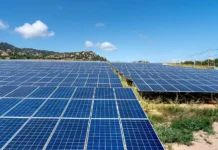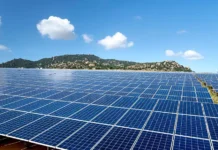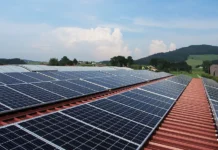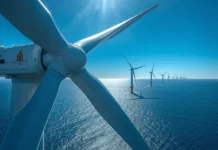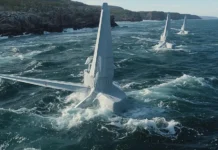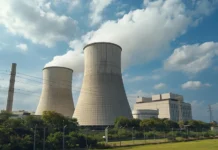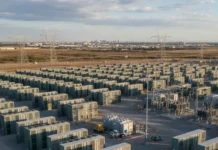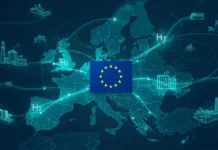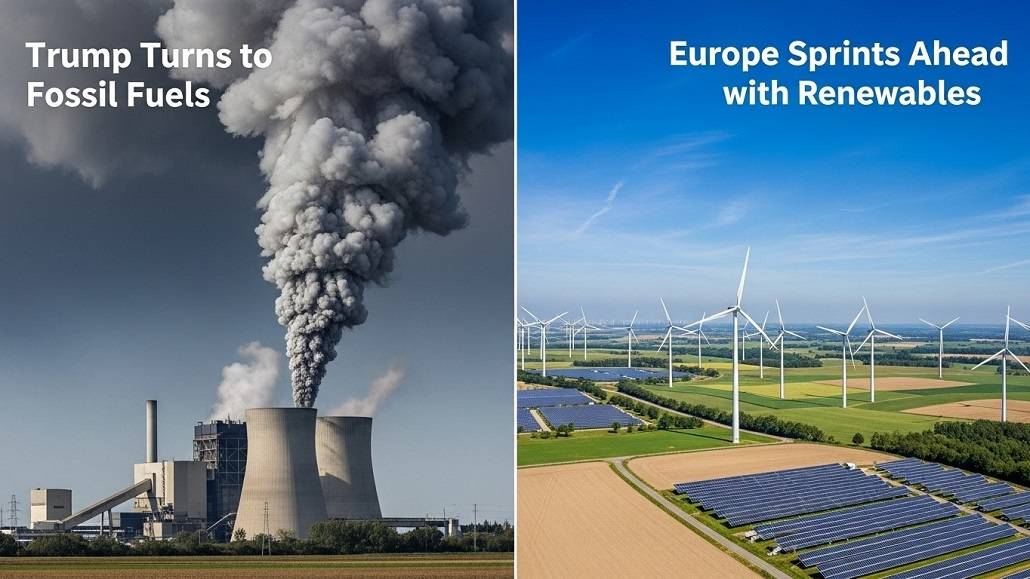Last year, clean energy sources made up a record 47% of Europe’s electricity, beating fossil fuels.
A recent analysis from Ember, a think tank in London, says that solar power grew at an unprecedented rate, giving Europe 11% of its electricity and beating coal for the first time.
Together, solar and wind power beat gas, which has been going down for the past five years.
These are key steps towards the European objective of cutting greenhouse gas emissions by 55% from 1990 levels by 2030.
Ember showed that emissions from Europe’s electricity sector are now less than half of what they were in 2007.
This has happened because politicians of all stripes backed renewables, the report said.
“Many national and European elections bred concerns that the transition to clean energy would lose support. On the contrary, progress continued at pace,” said the report.
Some of the political drive that people share is economic.
Ember determined that since 2019, solar and wind power had saved Europeans 59 billion euros ($61 billion) in fossil fuel imports, mostly petrol.
In those five years, fossil fuels made up only 29% of the power sector, while renewables expanded.
Europe doesn’t have a lot of oil and gas, therefore it spends around $500 billion a year on fossil fuels from other countries. Developing renewable energy sources is its best bet for becoming energy independent.
The US, on the other hand, is the world’s biggest oil producer and exporter of liquefied natural gas (LPG). President Donald Trump wants to make more LPG.
He declared a national energy emergency on Monday, his first day in office. This would speed up the process of getting licenses for drilling and building pipelines.
He also signed an executive order that put a temporary stop to all US wind farms, both on land and at sea.
Those policies show that the US and Europe don’t agree on energy issues.
“The US is diverging from global trends on wind power,” said Dave Jones, insights director at Ember. “Major economies are embracing wind as a source of cheap, clean electricity.
“The US risks being left behind in the clean industrial revolution.”
Ember found that last year, the US got only 10% of its electricity from wind power. In Europe, it got 17%, and in the UK, it got 29%.
Trump remarked on January 7 that leasing parts of the ocean for wind farms made them less valuable since they were no longer accessible to oil and gas companies.
Hours before he signed the executive orders, during his inauguration, Trump said, “America will be a manufacturing nation once again, and we have something that no other manufacturing nation will ever have: the largest amount of oil and gas of any country on Earth.”
Kostis Stambolis, the head of the Athens-based Institute of Energy for Southeast Europe (IENE), told Al Jazeera, “The US is currently autonomous in oil and gas, producing 20mn barrels of oil-equivalent a day. Trump wants to make it a big exporter of both.
Other countries are also increasing their energy supply.
Australia, Qatar, and Mauritania are just a few of the other countries that have announced new gas liquefaction trains. These will boost supplies and cut prices.
“We believe there’s going to be an LNG glut globally from 2026 to 2030, and that will lead to fierce competition and a fall in prices,” said Stambolis. “That will cover Europe’s needs more cheaply. What effect it will have on the development of renewables is very difficult to say.”
Ember thinks that Europe will keep putting money towards autonomy.
“The EU is striding closer towards a clean energy future powered by homegrown wind and solar,” wrote Beatrice Petrovich, who co-authored the report. “This new energy system will reduce the bloc’s vulnerability to fossil price shocks, tackle the climate crisis and deliver affordable energy.”
“Getting rid of fossil fuels in transportation is harder”
Some energy analysts are not sure that Europe will succeed.
“Renewables in electricity are the ‘easy’ part of the transition, especially at a time of high fossil fuel prices. Replacing fossil fuels in transport is harder, and in the heat sector still harder,” Professor Jonathan Stern, who leads the Oxford Institute of Energy Studies, a think tank, told Al Jazeera.
Aside from Europe’s goal of being the first climate-neutral continent by 2050, two things in particular have driven its change.
The COVID-19 pandemic in 2020 caused the development of a fund to help Europe get out of its recession.
The Recovery and Resilience Fund, as it was called, made 1.8 trillion euros ($1.87 trillion) in investments, a third of which went to green energy.
Russia’s full-scale invasion of Ukraine in 2022 sped up Europe’s move away from fossil fuels even more. Russia cut off gas supplies to Europe through pipelines in what seemed like an attempt to coerce Europe into withdrawing military aid to Kyiv.
Previous Ember reports have shown that the solar and wind energy industries in Europe developed to record rates of 5% in both 2022 and 2023.
At the same time, Europe started buying liquefied natural gas (LNG) from other countries, like the US, Australia, and Qatar.
Russia has also gotten involved by investing in liquefaction and delivering its gas in LNG ships to hide the fact that it comes from Russia.
Stern said that these changes in the gas market have helped renewables, but that this help might not last long.
“Gas prices have been extremely high in 2024 because of the transition from Russian gas to LNG where we are in a tight global market. This hugely benefitted renewables,” he said.




